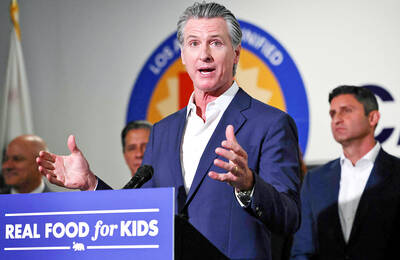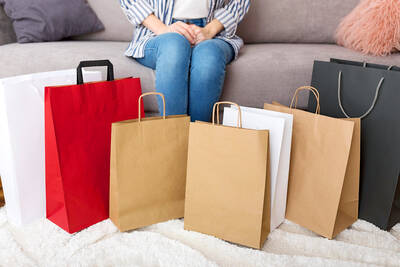Nowadays, we are more likely to type out our ideas and feelings on a computer keyboard than write with a pen, let alone a calligraphy brush. Even when we are simply looking at facsimiles of calligraphy on our computer screens, we can still follow the brush strokes, observe the structure of the characters and see how the brush would have been used, and this would tell us something of what the calligrapher was thinking, and what kind of personality they had, all wrapped up with the tactile sense and intimacy the feeling of their presence gives us. Then, even if we are unsure of the meaning behind the Chinese characters themselves, we can at least sense something of the energy of the person that wielded the brush.
This calligraphy known as Poem by Emperor Huizong (1082 AD -1135 AD) of the Northern Song dynasty now in the collection of the National Palace Museum, Taipei, and soon to be put on display, is a representative work of Huizong’s unique “Slender Gold” calligraphic style, with the largest characters on any of the 20 or so extant pieces from Huizong’s hand.
Slender gold script is essentially a form of kaishu standard script, placing extra emphasis on where the brush rests and changes direction, using slender, vigorous brush strokes. Large characters of slender gold script were difficult to write, and each character in this poem is over 10 cm tall. The forceful brushstrokes almost appear to have been carved out with a knife. The script, with its large, vigorous and elegant strokes, convey the fearless spirit one would expect of an emperor.

Photo Courtesy of Taipei National Palace Museum
The poem reads,
“Blooming flowers nestled in verdant leaves, resplendent in the courtyard. In the first light of the morning, dew drops glisten dream-like on the flowers; in the glow of sunset they seem to merge with the evening breeze. Even the world’s most talented painter would fail to capture the raw beauty of Mother Nature’s canvas. The butterfly becomes intoxicated in the scene, enraptured by fragrance carried on the wind, fluttering in the evening breeze.”
(Translated by Paul Cooper)
生活在現今的我們,在電腦鍵盤上敲入所思所想,拿筆書寫的機會是越來越少了,遑論執毛筆寫書法。但即便是透過螢幕看書法的複製圖片,依循著那一筆一畫,看架構、看用筆,我們可以鮮明地感覺到寫字者的意念與個性,以及「此曾在」的觸感與溫度,即便是看不懂中文文意,也可以感知到寫字者的能量。
現藏台北國立故宮博物院,近期將展出的宋徽宗(西元一○八二~一一三五)《詩帖》,是其獨創之「瘦金體」的代表作,也是宋徽宗傳世的二十多件作品中字體最大者。
瘦金體屬楷書,強調頓點及轉折處,筆畫細瘦險勁,因此字體越大越難書寫,然此詩帖每字逾十公分高,下筆有如刀刻之痕,字體大而剛勁俊秀,有帝王般無懼的氣概。
詩文為:
穠芳依翠萼,煥爛一庭中。零露霑如醉,殘霞照似融。丹青難下筆,造化獨留功。舞蝶迷香徑,翩翩逐晚風。
(台北時報林俐凱)

A: The 23rd Taiwan Pride parade will be marching again on Saturday, Oct. 25. B: Will the parade kick off from Taipei City Hall Plaza as usual? A: Yup, and there will be over 110 LGBT-themed booths at the Rainbow Festival in the plaza. B: The organizer is reportedly teaming up with Japanese, South Korean and other international groups. A: So we are likely to see more foreign visitors from across the world. Hopefully, this year’s parade can smash the record of 200,000 marchers set in 2019. A: 第 23 屆台灣同志遊行本週六即將登場。 B: 遊行還是從台北市政府前廣場出發嗎? A: 對,廣場「彩虹市集」還有超過

A: As the Taiwan Pride parade enters its 23rd year, the nation also celebrates the sixth anniversary of the legalization of same-sex marriage. B: However, a poll showed that support for same-sex marriage slightly dropped to 54.3 percent from last year’s 56.5 percent. A: The government is wavering on whether to extend the Assisted Reproduction Act to same-sex couples, leading to public doubts. B: Since US President Donald Trump took office in January, his oppression of Diversity, Equity and Inclusion (DEI) programs has also frustrated the global LGBT community. A: Let’s join the parade in Taipei tomorrow to

California will phase out certain ultra-processed foods from school meals over the next decade under a first-in-the-nation law signed on Oct. 8 by Gov. Gavin Newsom. The law seeks to define ultra-processed foods, the often super-tasty products typically full of sugar, salt and unhealthy fats. The legislation requires the state’s Department of Public Health to adopt rules by mid-2028 defining “ultra-processed foods of concern” and “restricted school foods.” Schools have to start phasing out those foods by July 2029, and districts will be barred from selling them for breakfast or lunch by July 2035. Vendors will be banned from providing the “foods

Have you ever bought a new smartphone and suddenly found yourself dissatisfied with your perfectly fine headphones? Before long, you’ve purchased premium wireless earbuds, a protective case and a fast-charging station. What begins as a single acquisition snowballs into a shopping spree—this is the Diderot effect in action. Named after the 18th-century French philosopher Denis Diderot, the Diderot effect originates from an essay he wrote. In it, he recounted receiving a luxurious robe as a gift. As lovely as it was, the robe clashed with the rest of his humble belongings. One by one, he replaced his possessions to match the